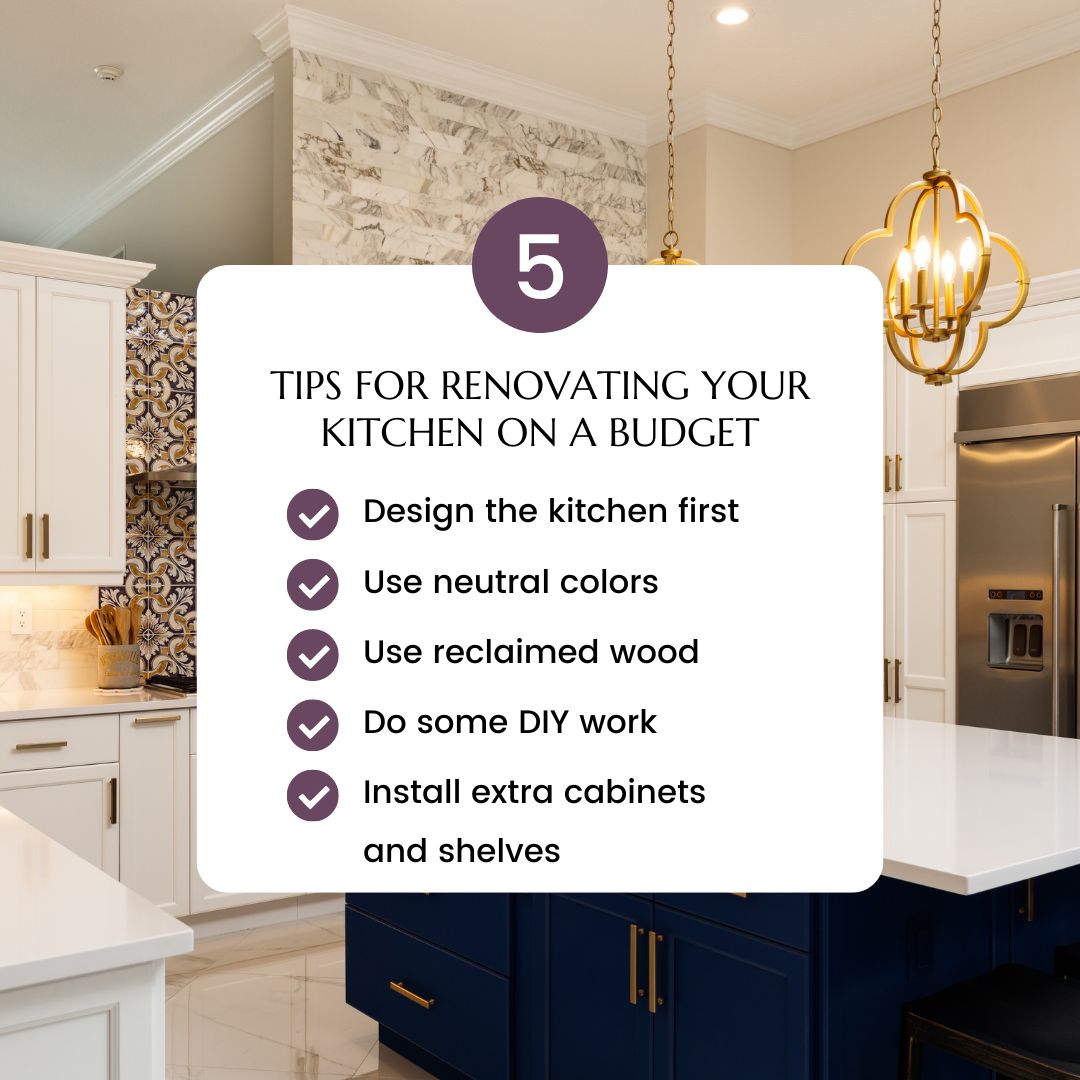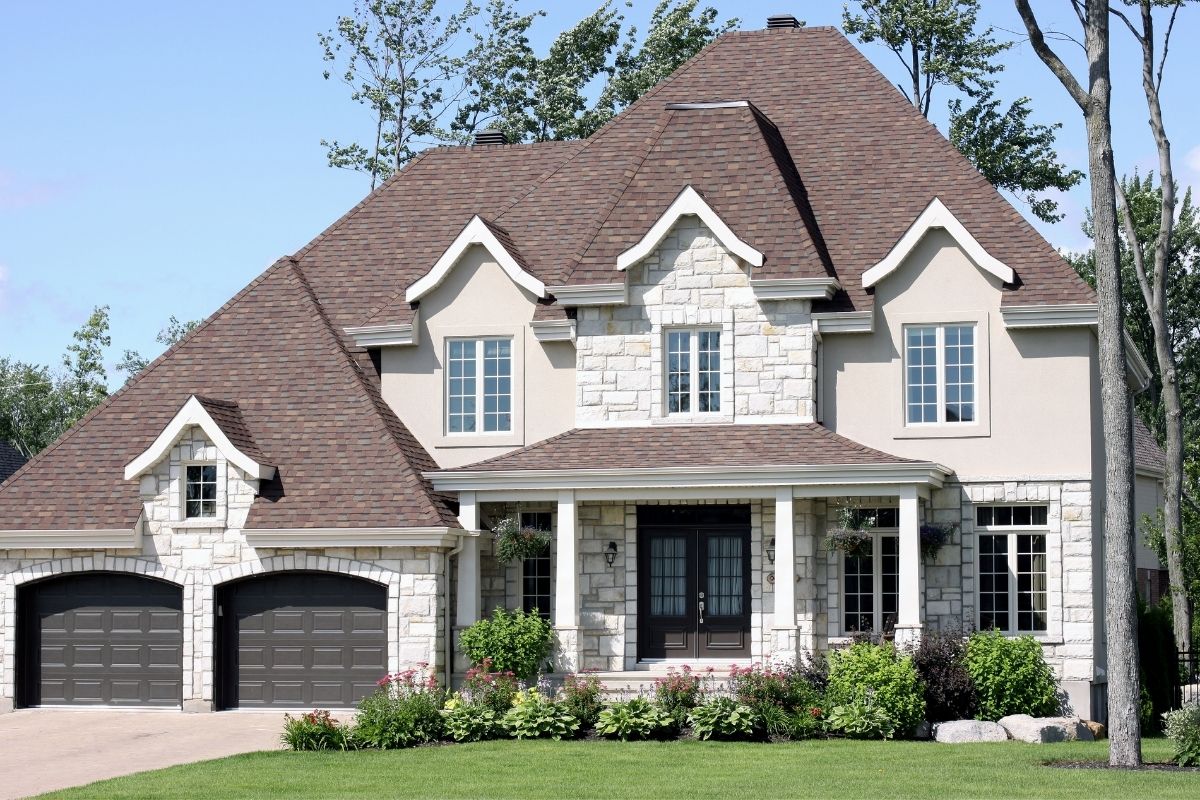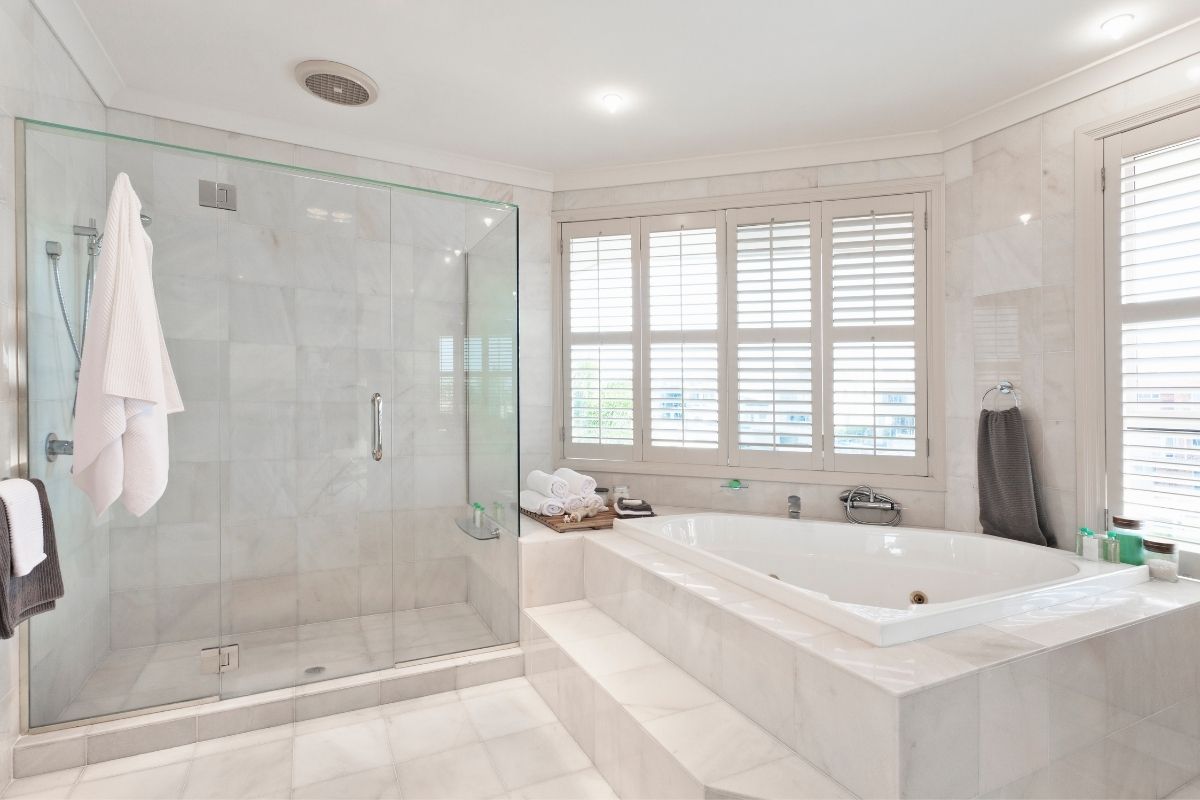Quick Guide on Renovating a House for Under 50k
How would you like to have your dream home for under the cost of fifty thousand dollars? That is a question that many people ask themselves when they require a new house. But unfortunately, it can be difficult and expensive to find land, get permits, hire contractors, etc. You might think it’s impossible, but there are some ways around this! This blog post will give you tips on renovating a house for under 50K and other useful home renovation tips (even if your budget is above 50K).
You’ll learn about:
- What is a Home Renovation?
- Budget Planning and Allocation
- Cost Saving Tips
- DIY vs. Hiring Professionals
- Financing for Renovating a House for Under 50K
- How to Renovate Your Kitchen
- How to Renovate the Exteriors
- How to Renovate the Bathroom
- How to Renovate the Bedrooms
- How to Renovate the Walls and Ceilings
- Frequently Asked Questions About Renovation
What is a Home Renovation?
A home renovation is a property that requires one or more repairs, renovations, and improvements to bring it up to current standards, make it functional for modern living and be aesthetically pleasing. The cost of renovating homes varies depending on the size, location, and condition of the property. A renovation is different from construction and development.
Usually, a home renovation is performed to fix any problems that exist with the house. It could be anything from fixing leaks in your roof to replacing old cabinets in your kitchen. The average home renovation in a single-family house cost $10,000-50,000.
Budget Planning and Allocation
Creating a detailed budget for your renovation project is crucial to ensure that you stay on track and avoid overspending. Start by assessing your current finances to understand how much you can realistically allocate without putting a strain on your budget. This includes reviewing your savings, income, and existing expenses. If additional funds are needed, explore financing options like home equity loans or personal loans, comparing interest rates and terms to choose the best fit for your situation.
Next, list all renovation needs by making a comprehensive inventory of every area and task that needs attention. Prioritize projects by necessity and potential return on investment, ensuring that essential repairs and improvements are addressed first. Research the costs associated with each renovation task by looking at resources such as HomeAdvisor or local contractor estimates.
Break down your budget into categories, assigning a percentage of the total budget to each area. For example, allocate 30-40% for major kitchen upgrades, 20-25% for bathroom renovations, 10-15% for exterior improvements, and 15-20% for bedrooms and living areas. Additionally, set aside 10-15% of your total budget as a contingency fund to cover unexpected expenses.
To keep your spending in check, use budgeting tools like software or spreadsheets to monitor expenditures and regularly update your budget to reflect actual costs. Review and adjust your budget periodically, staying prepared to tweak plans if costs deviate from expectations. This proactive approach will help you manage your renovation project efficiently and effectively.
Cost-Saving Tips
Saving money during renovations without compromising on quality is entirely possible with a few strategic approaches. One effective way is to buy materials in bulk, which often comes with significant discounts. Coordinate bulk purchases with neighbors or friends to increase your buying power and share the savings. Another cost-saving measure is to use recycled materials. Reclaimed wood, recycled tiles, and other second-hand materials are often cheaper and environmentally friendly, providing a unique and sustainable touch to your renovation.
Doing some of the work yourself can also save a considerable amount on labor costs. Assess your skills honestly and take on simpler tasks like painting, landscaping, and demolition. Use online tutorials and how-to guides from platforms like YouTube and DIYNetwork to learn new skills and tackle projects confidently. Additionally, plan your purchases around major sales events such as Black Friday and holiday sales when home improvement stores offer significant discounts. Joining loyalty programs at these stores can also provide additional savings and exclusive discounts.
Always ask suppliers for discounts, especially when buying in bulk, and don’t hesitate to negotiate prices with contractors. Requesting multiple quotes and comparing them can help you secure the best deal. By implementing these cost-saving strategies, you can make your renovation project more affordable without sacrificing quality.
DIY vs. Hiring Professionals
Deciding whether to tackle renovation tasks yourself or hire professionals depends on your skills and the complexity of the tasks. DIY-friendly tasks include painting, which requires basic tools and techniques; landscaping, involving simple tasks like planting and mowing; demolition of non-load-bearing walls, with proper safety precautions; and tiling, for backsplashes or simple floor tiles, given careful preparation.
On the other hand, professional tasks include electrical work, which must adhere to safety codes and regulations to avoid dangerous mistakes; complex plumbing installations or repairs to prevent leaks and water damage; structural changes involving load-bearing walls, which require professional expertise; and HVAC installations, needing specialized skills and equipment for proper setup.
When hiring professionals, start by seeking personal referrals from friends, family, or neighbors. Use online platforms like Angie’s List, Houzz, and Yelp to read reviews and ratings of local contractors. Check references by asking contractors for past clients’ contact information and following up to inquire about their experiences. Obtain at least three quotes from different contractors to compare pricing, scope of work, materials used, and timelines.
Verify the contractor’s credentials, ensuring they are licensed, insured, and bonded. Check for any complaints with the Better Business Bureau or local consumer protection agency. Before starting work, have a detailed contract outlining the scope of work, materials to be used, timelines, payment schedules, and warranty terms. Maintain open and regular communication with your contractor, scheduling check-ins to discuss progress and address any issues. By following these guidelines, you can decide which tasks to handle yourself and ensure you hire reliable contractors for a successful renovation project.
Financing Your Renovation
Exploring Financing Options
When planning a renovation, financing is a crucial aspect to consider. There are various financing options available, each with its own set of advantages and disadvantages.
- Home Equity Loans: These loans allow you to borrow against the equity in your home, often providing a lower interest rate compared to other types of loans. They are ideal for large renovation projects due to the substantial amount you can borrow. However, they require you to use your home as collateral, which means if you default on the loan, you risk losing your home.
- Personal Loans: These are unsecured loans that don’t require collateral, making them accessible for those without significant home equity. They can be processed quickly, providing timely access to funds. The downside is that they often come with higher interest rates and shorter repayment terms compared to home equity loans.
- Government Grants: Various local, state, and federal programs offer grants for home renovations, especially if the renovations involve energy efficiency improvements or are necessary for accessibility. These grants don’t need to be repaid, making them a highly attractive option. However, they are often competitive and may require you to meet specific eligibility criteria.
- Credit Cards: While convenient for smaller projects or covering unexpected expenses, credit cards should be used cautiously due to high-interest rates. Look for cards with promotional 0% APR periods, but be mindful of the terms to avoid accruing high-interest debt once the promotional period ends.
- Choosing the Best Option: The best financing option depends on your financial situation, the scale of your renovation, and your ability to manage debt. Home equity loans are best for large projects if you have significant equity. Personal loans are suitable for medium-sized projects and those with good credit. Government grants are ideal if you qualify, and credit cards should be reserved for smaller, manageable expenses.
Using Credit Wisely
Credit can be a useful tool for financing renovations if used wisely. Here are some tips to manage it effectively:
- Set a Budget: Before using credit, establish a detailed budget to understand how much you need and how you will repay it. Avoid the temptation to overspend just because credit is available.
- Choose the Right Credit Card: If using a credit card, opt for one with a 0% introductory APR on purchases. This can save you a significant amount on interest if you can pay off the balance before the introductory period ends.
- Avoid High-Interest Debt: Be cautious of high-interest credit cards. The interest can quickly accumulate, leading to unmanageable debt. If you must use a high-interest card, aim to pay off the balance as quickly as possible.
- Monitor Your Credit Score: Regularly check your credit score to ensure it remains healthy. Maintaining a good credit score can help you secure better loan terms in the future. Keep your credit utilization low and make timely payments to protect your credit rating.
- Consolidate Debt if Necessary: If you have multiple credit accounts, consider consolidating them into a single loan with a lower interest rate. This can simplify your payments and reduce the amount of interest you pay over time.
How to Renovate Your Kitchen

A kitchen is a place where people in a home come together, consume food, and bond. Most families consider their kitchens to be the heart of their homes. A renovation is a transformative process that can improve your family life and even increase the value you get from your current house in the future. A kitchen renovation can do wonders for the functionality and appeal of your home.
Tips for Renovating Your Kitchen on a Budget
 1. It is always important to design your kitchen first before you restore it. Doing this will save you money and stress by ensuring that everything installed in the room fits with your vision, from countertops to lighting fixtures.
1. It is always important to design your kitchen first before you restore it. Doing this will save you money and stress by ensuring that everything installed in the room fits with your vision, from countertops to lighting fixtures.
2. Consider using a neutral color palette, so you can match any accessories or other properties when you go for resale. You can save money on color by using white or cream paint for the walls, cabinets, and other kitchen parts.
3. Use reclaimed wood in your new cabinets to give an antique look kitchen. You can buy used cabinets from repair shops or simply use wood veneer to create the appearance of older cabinets.
4. Do some DIY work around the kitchen to save money on labor costs. For example, design and build your own cabinets, install a window, or fix leaks in the ceiling yourself.
5. If you do not have enough storage space for your kitchen appliances, consider installing extra cabinets and shelves.
All these will cost you around $10,000. The good thing about this solution is that you can split it into smaller jobs and ask for quotes from different contractors.
How to Renovate the Exteriors

The exteriors of your home can affect its value significantly. Therefore, it’s important to pay attention to them so you don’t neglect the curb appeal of your property and reduce its value. After all, it’s the first thing that people see when they look at home.
Tips to Help Restore Your Exterior
1. Clean up your yard and remove any debris or garbage lying around.
2. Cut back trees if your property has a lot of overgrowths. The removal will improve air quality and give you a clear view of your property.
3. For any repairs to asphalt or concrete, use a quality contractor and let them do it for you. The last thing you want is cracks in the driveway when they least expected it.
4. If your home has an old mailbox, consider installing a new, more modern one.
5. Install a new front door with windows if your current one is damaged or outdated.
These tasks can be done with little to no effort and money, just some time and the right information, and you’ll make your exterior look high-end.
You will also save yourself a lot of pain by avoiding hiring an inexperienced contractor who might try to rip you off later. An estimate for this project will cost about $5,000.
How to Renovate the Bathroom

Bathrooms are another important room to remodel. After all, everyone in your family will want to use the bathroom!
Here are some things that you can do to repair your bathroom
1. If you have an outdated shower, consider replacing it with a new one. Old tubs and showers are not only unsightly, but they’re also hard to clean and maintain.
2. Consider redesigning the size of the room and fixing any plumbing issues before you put in a new shower.
Adding extra space to your bathroom can cost thousands of dollars, so be sure you are ready to do this before beginning.
3. If you’re concerned about water damage and mold from your old shower, remove the walls and have them replaced. You can include a tiled wall design while you’re at it, too!
4. Consider installing new tiles in the bathroom. If you want to save money, consider purchasing some used tiles, as they are easy to find online or on Craigslist.
All these will cost around $10,000-$15,000 for a full bathroom renovation project.
There are so many ways you can engage in this, from buying reclaimed tiles or getting them done yourself to doing it all with some contractors’ help.
How to Renovate the Bedrooms
Essential bedrooms are something that no one wants to overlook. Your bedroom is where you can relax and get some rest after a long day of work!
Here’s what you should consider when renovating your bedroom:
1. If your old mattress is uncomfortable, consider buying a new one. A good mattress will give you a good night’s rest and help you wake up fresh every morning.
2. If your ceiling has water stains or cracks, consider having them fixed. You’ll not only improve the look of the bedroom and reduce the risk of mold, but you’ll add value to your property too!
3. If you have an outdated closet layout that isn’t functional for your needs, hire a designer and get one redone. Consider changing the closets and adding a few new cabinets for dressers, too.
4. If you have old light fixtures in your bedroom, consider getting some bright LED lights installed on the ceiling!
5. You may also want to get a carpet laid if you’re not happy with the current one. Just make sure that it matches your needs and doesn’t cost you too much!
These projects will cost about $5,000 and can be completed in a couple of weeks if you book in contractors and purchase durable products.
How to Renovate the Walls and Ceilings
The walls and ceilings are a major part of your home. They control the temperature, have water damage, cracks, and other issues that you must deal with to improve the look and function of your home.
Here’s what you should consider when remodeling your walls and ceilings:
1. If there’s mold on the ceiling or walls, consider getting them fixed.
2. You may also want to use other techniques that will help your home look better too! For example, consider installing new molding or painting the walls a different color. Or even using decorative coverings like wallpaper or vinyl for the rooms!
3. If you want to save money, consider using wallpaper in your home. You can invest a few hundred dollars to get a new wallpaper and paint for the entire house!
Ceilings are often overlooked, but they’re a key part of your home. Ceiling damage is an area that needs attention and repair. Failure to do so will mean water damage, mold and may even weaken your home’s structure.
Consider getting the ceiling fixed if:
1. Your ceiling has water damage or mold on it.
2. It looks old and outdated; anything that is unsightly in your bedroom will hurt the way you live by affecting your every mood!
3. Your ceiling is cracking, and there are holes in it.
All these issues can be solved for under $10,000, and you can hire a contractor to do it all for you.
Enhancing Curb Appeal on a Budget
Affordable Landscaping Ideas
Improving your home’s curb appeal doesn’t have to be expensive. Here are some budget-friendly landscaping ideas:
- Plant Native Plants: Native plants are well-suited to your local climate, requiring less water and maintenance. They can thrive with minimal intervention, making them a cost-effective choice for landscaping.
- Add Mulch: Mulch is an inexpensive way to improve the appearance of your garden. It helps retain moisture, suppress weeds, and adds a polished look to your flower beds. Choose organic mulch for added benefits to your soil.
- Use Gravel for Pathways: Gravel is a budget-friendly material for creating walkways and garden paths. It’s easy to install and maintain, providing a clean, defined look to your landscape.
- DIY Planters: Create your own planters using recycled materials like old wooden pallets or barrels. Planting flowers or herbs in these DIY planters can add color and charm to your garden without significant expense.
Upgrading Outdoor Spaces
Enhancing your outdoor living spaces can greatly improve your home’s appeal. Here are some tips for doing so on a budget:
- Build a DIY Fire Pit: A fire pit can serve as a focal point in your backyard, providing a cozy gathering spot. You can build one yourself using affordable materials like bricks or pavers. There are many online tutorials to guide you through the process.
- Add Outdoor Lighting: String lights, solar-powered garden lights, and lanterns can create a warm, inviting atmosphere. Lighting can highlight features of your garden and improve safety, all without a hefty price tag.
- Create a Small Garden: A small vegetable or herb garden can be both practical and aesthetically pleasing. Use raised beds or containers to grow your plants. This not only adds greenery to your space but can also provide fresh produce for your kitchen.
- Use Second-Hand Furniture: Instead of buying new outdoor furniture, consider repurposing or upcycling old pieces. A fresh coat of paint or new cushions can give old furniture a new life, enhancing your outdoor area without significant expense.
Last Thoughts on Renovating a House for Under 50K
We hope this blog post has given you some insight into what a home renovation is and how to make it happen. Remember, the process of renovating your house doesn’t have to be daunting or expensive. If you plan and work with professionals who understand the needs of homeowners, then any project can be done in a cost-effective way that leaves both parties happy!
Frequently Asked Questions About Renovating A House On A Budget
Is it worth fixing up an old house?
This is a big question that many homeowners face. The short answer is yes—if you fix up an old house, it’ll be much more valuable than the one it was before! In addition, increasing the value of your home will make it easier to sell later if you ever decide to move.
However, upgrading an especially old house can be expensive and time-consuming, so it’s important to evaluate the structure and foundation professionally before you spent any money.
Is it cheaper to renovate or build new?
In the long run, it’s far cheaper to restore than build new. For example, a house that has just been built will have higher expenses related to construction materials and labor than a comparable renovated home.
Renovating also takes less time—the average renovation takes about two months while building a new home can take three years or more!
Is 50k enough to renovate a house?
For an older home, it’s a lot of money! A significantly renovated house will cost between $50k to $100k.
If your home was constructed in the last few years, you might be able to save some money by creating simple updates like painting or installing new cabinets and countertops.

Yuval Elkeslasi is a distinguished professional in the finance industry, celebrated for his pioneering strategies and significant contributions as the leader of Hard Money Lenders IO. Hailing from Queens, New York, Yuval has built an impressive career, transforming the lending landscape through his expertise and visionary approach. Yuval Elkeslasi
attended Florida State University, where he obtained a bachelor’s degree in Finance. This academic foundation provided him with the necessary skills and knowledge to thrive in the competitive financial arena. Yuval’s tenure at Hard Money Lenders IO is marked by numerous pioneering accomplishments. He has introduced a variety of loan programs designed to cater to specific client requirements, including fix and flip loans, new construction financing, cash-out refinancing, rental property loans, and specialized financing for luxury items like yachts. Among Yuval’s significant achievements is securing an $8 million construction loan for a spec home builder in Port Royal, Naples. He also orchestrated the financing for a prestigious 72’ 2024 Viking Convertible yacht valued at $7.2 million. These transactions demonstrate Yuval’s adeptness at navigating complex financial landscapes and delivering exceptional results.

